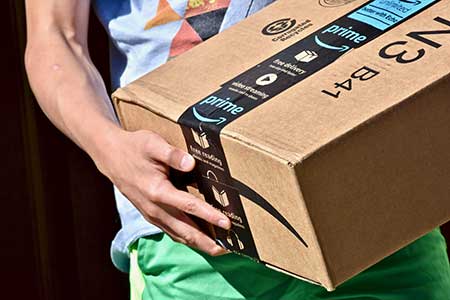 Every day, tens of thousands of packages appear almost by magic on doorsteps around the world. If Amazon has done its job well, everything arrives undamaged and in one piece.
Every day, tens of thousands of packages appear almost by magic on doorsteps around the world. If Amazon has done its job well, everything arrives undamaged and in one piece.
It’s nothing short of a miracle. So one would think.
But it is actually science.
Somewhere in a laboratory in Sumner, Amazon researchers put its packaging to the test. Some packages are dropped a dozen or more times from dizzying heights. Others are crushed under the weight of 30,000 pounds or more. Some pass the test. Other packaging gets a big red FAIL!
Welcome to the Packaging Innovation Lab, a place where Humpty Dumpty wouldn’t make it through a day. The lab’s mission is to test the limits of packaging, from being bumped and jostled in the back of a truck slamming on its brakes to surviving the unforgiving weather of sunny Florida. If a package can’t make it through all 17 tests – if even one side surrenders – the package fails.
When does the testing stop? Never. Every time a success occurs, the takeaways begin. A little less cardboard here, a couple less inflatable plastic puffs of padding that everyone loves to pop – anything that can reduce waste and still protect the product.
As everyone discovered during the pandemic, a lifeline of deliveries can quickly fill a recycling bin. While getting a product to your doorstep undamaged is central to the mission, the company still wants to reduce wasted and costs. Amazon has been reducing its footprint in numerous ways, from more environmentally friendly data centers and office buildings to electric delivery vans. Every chance to reduce waste is worth the time to study and perfect in the company’s mind.
The company began to focus on packaging more than a decade ago, but protecting a product from being damaged during its often arduous journey while reducing the packaging is not as easy as it seems. Yes, a box inside of a box may sound silly to some, but imagine dropping a high-dollar item that shatters into pieces. The customer doesn’t get their order and the vendor loses the sale.
Back to the lab. Originally opened in Seattle’s Rainier Valley, the Packaging Innovation Lab was moved in 2022 to Sumner, where it shares space with an experimental fulfillment center and a partially operational one. This allows the 20 lab workers to rapidly test concepts to see if they are ready for Prime time (pun intended).
More than 100 tests are performed each week. The results are shared with manufacturers, suppliers and vendors to improve the packaging itself and the process used to package and ship the more than 10 million packages the company ships annually from its global network of fulfillment centers.
While it has a long way to go, Amazon says it’s already cut 1.5 million metric tons of packaging material from the waste stream since 2015. Those slim recyclable packages that look a bit like bubble wrap? It came out of the Packaging Innovation Lab innovation to replace paper-padded mailers. Last year, the company reduced its cardboard use by 60,000 tons a year.
Want to know Amazon’s plans to stop the box in a box?